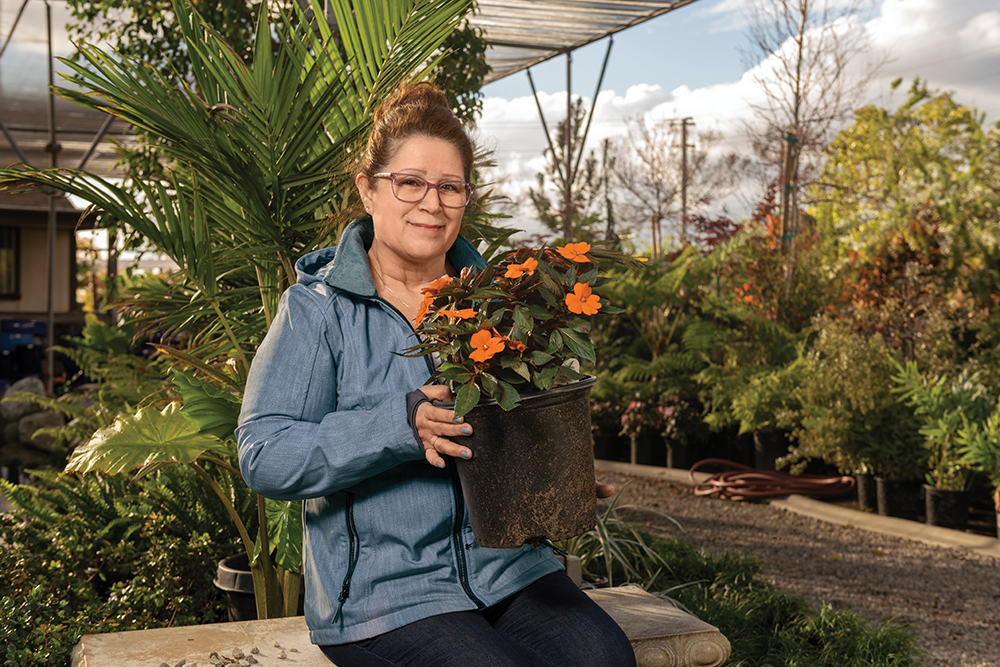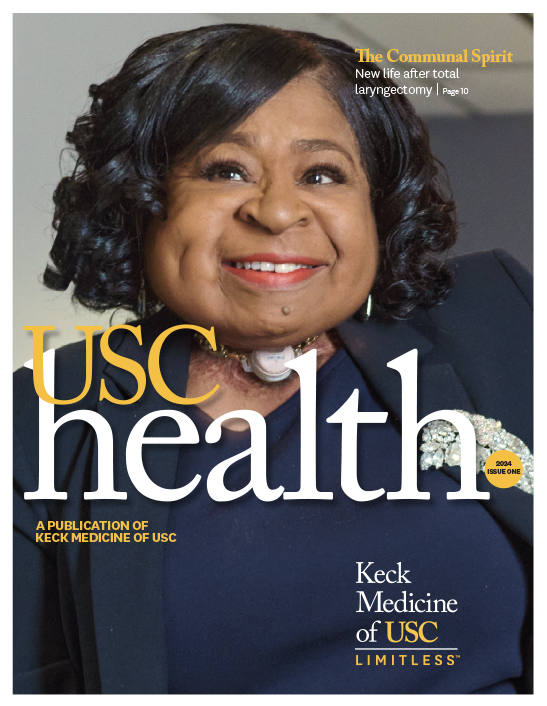
Elodia Estrada thought she would never smell again. That is, until Keck Medicine of USC’s Kevin Hur, MD, was able to find the true culprit behind her “allergies.”
Nasal congestion is a common affliction that, just as commonly, disappears with allergy medication or a nasal spray.
For others, like Elodia Estrada, nothing that her primary care doctor suggested could clear up the stuffy nose that plagued her constantly for more than a decade.
“The doctor gave me allergy medications, sprays, antibiotics and nothing worked,” she says, adding that she assumed she had a bad cold when she first raised this with her primary care doctor.
It took almost a decade for her to reach Keck Medicine of USC and find the right diagnosis.
Causes and symptoms of nasal polyps
What Elodia’s doctors failed to realize is that her problem was not allergies but nasal polyps. Polyps form when the lining in the sinuses swells and forms sacs shaped like tiny grapes.
Though not dangerous, these polyps can become large enough to obstruct nasal passages. To the patient, this can feel like congestion and is often accompanied with a runny nose and other symptoms that mimic allergies or even the common cold.
By the time Elodia was referred to Kevin Hur, MD, a rhinologist with the USC Caruso Department of Otolaryngology – Head and Neck Surgery, part of Keck Medicine, her nasal polyps had been making her life extremely difficult for years.
Elodia had such difficulty breathing, she endured years of sleepless nights, frequently awaking because she wasn’t able to breathe. Even eating and drinking were challenging because she couldn’t breathe through her nose while she chewed. She completely lost her sense of smell.
Dr. Hur says that many patients with nasal polyps assume they have allergies. Likewise, he says, many primary care physicians mistakenly treat their patients for sinus infections, allergies and colds when what they really have is nasal polyps.

“You usually can’t see nasal polyps with a typical physical exam, so most doctors assume their patients have a cold or allergies,” says Dr. Hur, who is an assistant professor of clinical otolaryngology – head and neck surgery at the Keck School of Medicine of USC. “If it doesn’t get better, then they are more likely to refer their patient to an ENT for further evaluation.”
Otolaryngologists find polyps one of two ways: They either have their patient undergo a computerized tomography (CT) scan of their sinuses or use an endoscope to examine the nasal passages. When they find them, the polyps can be removed surgically.
Minimally invasive surgery to remove nasal polyps
Though the idea of surgery gave Elodia pause, she realized after meeting Dr. Hur that this was going to be the answer to her years of suffering.
“I had seen so many doctors and didn’t think anyone was going to be able to help me,” she says, “but after meeting Dr. Hur, I knew things were going to change. I knew he was going to fix this.”
The minimally invasive procedure involves using an endoscope in one hand and small instruments in the other to carefully remove the polyps through the patient’s nostril.
“It’s important to remove the polyps without damaging the surrounding structures,” Dr. Hur says, noting that many general otolaryngologists do not perform the surgery because the polyps make it hard to see vital structures in the nasal cavity. “You must know where you are at all times when performing this procedure.”
It feels like a miracle. I feel like a normal person for the first time in years.
Elodia Estrada, patient, Keck Medicine of USC
Dr. Hur underwent fellowship training in rhinology, specifically to master these types of procedures. He added that while doctors with fellowship training in rhinology are not common, there are three at Keck Medicine.
“It is one reason many community physicians feel comfortable referring their patients to Keck Medicine,” he says.
Dr. Hur told her the procedure was probably going to change her life and it has. She can eat and drink normally and is back to sleeping through the night and can smell coffee brewing, one of her favorite smells, for the first time in many years.
“It feels like a miracle,” Elodia says. “I feel like a normal person for the first time in years, and I thank God for sending Dr. Hur to me.”
Topics


